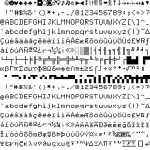Dwight Elvey
Veteran Member
No. Often for a single card, it is not done. It likely expects multiple cards.
It might need a change of the address mux as well. I know that for the Olivetti M20 it requires changes at the address mux. Ir does 256k without any change but needs different addresses at the mux.
Dwight
It might need a change of the address mux as well. I know that for the Olivetti M20 it requires changes at the address mux. Ir does 256k without any change but needs different addresses at the mux.
Dwight


